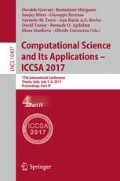Abstract
The majority of this research has been situated in the methods of crisp Micmac and Fuzzy Linguistic Micmac as systematic modeling tools under CIA method. In the current study, both Micmac and Fuzzy linguistic Micmac methods are applied and also compared to analyze the interrelationships between the KBUD and affordable housing variables in Tabriz city, Iran. The obtained results and the rankings taken from both crisp Micmac and FL Micmac are almost the same but few cases, which indicates accuracy of the employed methods. This little variation happens due to the using fuzzy values in FL Micmac that is more precise. One of the advantages of the fuzzy linguistic Micmac is its capability in employing heat maps. The heat maps show whether the system’s variables has great influence/dependence on each other or has not. In other words, these maps enable the decision maker to look the strength of the system in a glance, from the existing relations between the factors. The other advantageous of the heat maps is, clustering the factors in an optical mode, because the factors with the same range of influence/dependence may have same role in the system. In our analyzed system, despite of being superior of some variables, the strength of the whole system is in the middle and lower.
Access this chapter
Tax calculation will be finalised at checkout
Purchases are for personal use only
Notes
- 1.
Trend Impact Analysis.
- 2.
Fuzzy Cognitive Maps.
- 3.
Cross Impact Analysis.
References
Alizadeh, A., Motlagh, V.V., Nazemi, A.: Scenario Planning. Institute for International Energy Studies (IIES), Tehran (2008). (Text in Persian)
Amer, M., Daim, T.U., Jetter, A.: A review of scenario planning. Futures 46, 23–40 (2013)
Austin, P.M., Gurran, N., Whitehead, C.M.E.: Planning and affordable housing in Australia, New Zealand and England: common culture; different mechanisms. J. Hous. Built. Environ. 29(3), 455–472 (2014)
Bell, W.: Foundations of Futures Studies: History, Purposes and Knowledge: Human Science for a New Era, vol. 1. Transaction Publishers, New Brunswick/London (2003)
Castellanos, N.D., Masegosa Arredondo A.D., Iglesias, J.V., Novoa Hernandez, P., Pella, D.A.: Improving scenario method for technology foresight by soft computing techniques. In: The 4th International Seville Conference on Future-Oriented Technology Analysis (FTA), 12–13 May, Seville, Spain (2013)
Davison, G., Han, H., Liu, E.: The impacts of affordable housing development on host neighbourhoods: two Australian case studies. J. Hous. Built Environ. (2016). http://link.springer.com/10.1007/s10901-016-9538-x
Duperrin, J.C., Godet, M.: SMIC 74-a method for constructing and ranking scenarios. Futures 7(4), 302–312 (1975)
Duperrin, J.C., Godet, M.: Methode de hierarchisation des elements d un sisteme, RapportEconomique du CEA R-45-51 (1973)
Enzer, S.: Interix – an interactive model for studying future business environments: part I. Technol. Forecast. Soc. 17(2), 141–159 (1980)
Godet, M.: The art of scenarios and strategic planning: tools and pitfalls. Technol. Forecast. Soc. 65(1), 3–22 (2000)
Helmer, O.: Problems on future research. Futures 9, 17–31 (1977)
Jetter, A., Schweinfort, W.: Building scenarios with fuzzy cognitive maps: an exploratory study of solar energy. Futures 43(1), 52–66 (2011)
Kontokosta, C.E.: Do inclusionary zoning policies equitably disperse affordable housing? A comparative spatial analysis. J. Hous. Built Environ. 30(4), 569–590 (2015)
Kosow, H., Gabner, R.: Methods of Future and Scenario Analysis; Overview, Assessment, and Selection Criteria, DIE Research Project, Development Policy: Questions for the Future, Bonn (2008)
Models of Decision and Optimization Research Group (MODO): A new fuzzy linguistic approach to qualitative cross impact analysis. J. Appl. Soft Comput. 24, 19–30 (2014)
Park, Y., Huang, S.-K., Newman, G.D.: A statistical meta-analysis of the design components of new urbanism on housing prices. J. Plann. Lit. 31(4), 435–451 (2016)
Ren, X., Yan, D., Hong, T.: Data mining of space heating system performance in affordable housing. Build. Environ. 89, 1–13 (2015). doi:10.1016/j.buildenv.2015.02.009
Schively, C.: Sustainable development as a policy guide: an application to affordable housing in island communities. Environ. Dev. Sustain. 10(6), 769–786 (2008)
Silverman, R.M.: Perceptions of nonprofit funding decisions: a survey of local public administrators and executive directors of community-based housing organizations (CBHOs). Public Org. Rev. 9(3), 235–246 (2009)
Van Notten, P.: Writing on the wall: scenario development in times of dis-continuity. Ph.D. thesis, University of Maastricht, Maastricht, The Netherlands (2005)
Yang, Y.: Sustainable Urban Transformation Driving Forces, Indicators and Processes. ETH ZURICH (2010). www.ETHZurich/ch/library/e-collection
Yigitcanlar, T., Lönnqvist, A.: Benchmarking knowledge-based urban development performance: results from the international comparison of Helsinki. Cities 31, 357–369 (2013)
Yigitcanlar, T., O’Connor, K., Westerman, C.: The making of knowledge cities: Melbourne’s knowledge-based urban development experience. Cities 25(2), 63–72 (2008a)
Zhang, C., Man, J.: Examining job accessibility of the urban poor by urban metro and bus a case study of Beijing. Urban Rail Transit 1(4), 183–193 (2015). http://link.springer.com/10.1007/s40864-015-0026-5
Author information
Authors and Affiliations
Editor information
Editors and Affiliations
Rights and permissions
Copyright information
© 2017 Springer International Publishing AG
About this paper
Cite this paper
Ranjbar nia, B., Murgante, B., Molaei Qelichi, M., Rustaei, S. (2017). A Comparative Study Employing CIA Methods in Knowledge-Based Urban Development with Emphasis on Affordable Housing in Iranian Cities (Case: Tabriz). In: Gervasi, O., et al. Computational Science and Its Applications – ICCSA 2017. ICCSA 2017. Lecture Notes in Computer Science(), vol 10407. Springer, Cham. https://doi.org/10.1007/978-3-319-62401-3_35
Download citation
DOI: https://doi.org/10.1007/978-3-319-62401-3_35
Published:
Publisher Name: Springer, Cham
Print ISBN: 978-3-319-62400-6
Online ISBN: 978-3-319-62401-3
eBook Packages: Computer ScienceComputer Science (R0)

